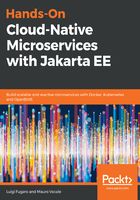
Sun Microsystems
Sun Microsystems released the first Java public implementation, version 1.0, in 1996. The concept of write once run anywhere, with the promise of great portability of software and ease of learning and use from the developers (in particular for automatic memory management and object-oriented paradigms) have all facilitated the rapid spread of Java in the information technology ecosystem.
The evolution and spread of the language was fast and continuous. After the two releases JDK 1.1 (February, 1997) and Java Standard Edition (JSE) 1.2 (December, 1998), Sun Microsystems released Java Platform, Enterprise Edition (Java EE (which was formerly known as Java 2 Platform, Enterprise Edition (J2EE)).
This was intended as a set of specifications, based on Java Platform, Standard Edition (Java SE), dedicated to enterprise applications that were rapidly moving from a desktop's local environment to a web browser environment.
At the end of 2006, Sun decided to donate the major part of the core code of the Java Virtual Machine (JVM), Standard and Enterprise Edition, as open source software under the terms of the General Public License (GPL). At the beginning of 2007, Sun completed the process, making all of its JVM's code available under free software and open source distribution terms. The final result of this process is the creation of OpenJDK, which became the open source implementation of the Java SE.
The work Sun did during these 10 years, from the first public release of 1996 to the birth of OpenJDK and the open source release of the JVM core and JSE platform in 2007, ideally made its role with regard to Java seem like that of an evangelist.